Text
Australian Eucalyptus anatomy and identification 🌿

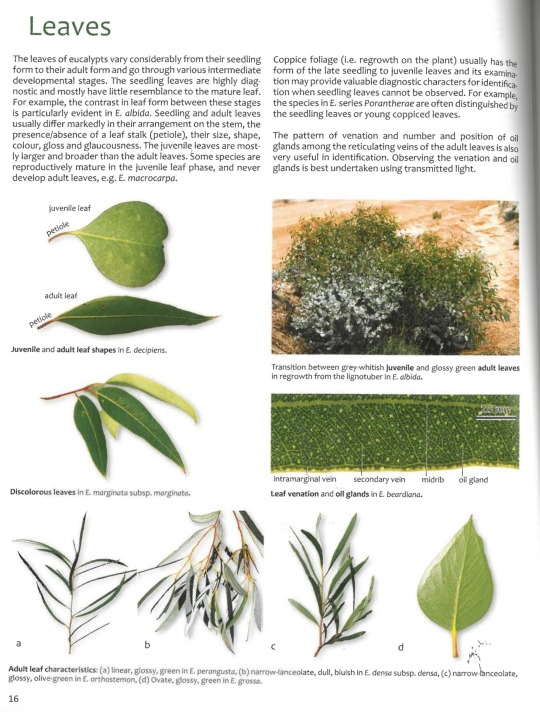


Poorly scanned from my book Eucalypts of Western Australia: South-West Coast and Ranges by Malcolm French
(Click for higher res)
9 notes
·
View notes
Text
Ancient redwoods recover from fire by sprouting 1000-year-old buds
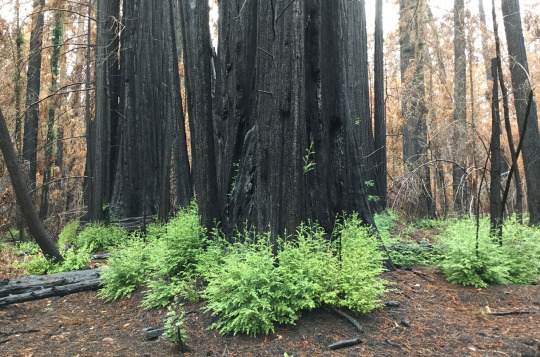
Article | Paywall free
When lightning ignited fires around California’s Big Basin Redwoods State Park north of Santa Cruz in August 2020, the blaze spread quickly. Redwoods naturally resist burning, but this time flames shot through the canopies of 100-meter-tall trees, incinerating the needles. “It was shocking,” says Drew Peltier, a tree ecophysiologist at Northern Arizona University. “It really seemed like most of the trees were going to die.”
Yet many of them lived. In a paper published yesterday in Nature Plants, Peltier and his colleagues help explain why: The charred survivors, despite being defoliated [aka losing all their needles], mobilized long-held energy reserves—sugars that had been made from sunlight decades earlier—and poured them into buds that had been lying dormant under the bark for centuries.
“This is one of those papers that challenges our previous knowledge on tree growth,” says Adrian Rocha, an ecosystem ecologist at the University of Notre Dame. “It is amazing to learn that carbon taken up decades ago can be used to sustain its growth into the future.” The findings suggest redwoods have the tools to cope with catastrophic fires driven by climate change, Rocha says. Still, it’s unclear whether the trees could withstand the regular infernos that might occur under a warmer climate regime.
Mild fires strike coastal redwood forests about every decade. The giant trees resist burning thanks to the bark, up to about 30 centimeters thick at the base, which contains tannic acids that retard flames. Their branches and needles are normally beyond the reach of flames that consume vegetation on the ground. But the fire in 2020 was so intense that even the uppermost branches of many trees burned and their ability to photosynthesize went up in smoke along with their pine needles.
Trees photosynthesize to create sugars and other carbohydrates, which provide the energy they need to grow and repair tissue. Trees do store some of this energy, which they can call on during a drought or after a fire. Still, scientists weren’t sure these reserves would prove enough for the burned trees of Big Basin.
Visiting the forest a few months after the fire, Peltier and his colleagues found fresh growth emerging from blackened trunks. They knew that shorter lived trees can store sugars for several years. Because redwoods can live for more than 2000 years, the researchers wondered whether the trees were drawing on much older energy reserves to grow the sprouts.
Average age is only part of the story. The mix of carbohydrates also contained some carbon that was much older. The way trees store their sugar is like refueling a car, Peltier says. Most of the gasoline was added recently, but the tank never runs completely dry and so a few molecules from the very first fill-up remain. Based on the age and mass of the trees and their normal rate of photosynthesis, Peltier calculated that the redwoods were calling on carbohydrates photosynthesized nearly 6 decades ago—several hundred kilograms’ worth—to help the sprouts grow. “They allow these trees to be really fire-resilient because they have this big pool of old reserves to draw on,” Peltier says.
It's not just the energy reserves that are old. The sprouts were emerging from buds that began forming centuries ago. Redwoods and other tree species create budlike tissue that remains under the bark. Scientists can trace the paths of these buds, like a worm burrowing outward. In samples taken from a large redwood that had fallen after the fire, Peltier and colleagues found that many of the buds, some of which had sprouted, extended back as much as 1000 years. “That was really surprising for me,” Peltier says. “As far as I know, these are the oldest ones that have been documented.”
... “The fact that the reserves used are so old indicates that they took a long time to build up,” says Susan Trumbore, a radiocarbon expert at the Max Planck Institute for Biogeochemistry. “Redwoods are majestic organisms. One cannot help rooting for those resprouts to keep them alive in decades to come.”
-via Science, December 1, 2023
11K notes
·
View notes
Text

The beautiful marri tree (Corymbia calophylla), a major species present in the forested region in south-west Western Australia.

Why is it so gnarled and wonky, you may ask? Especially when its bestie jarrah (Eucalyptus marginata) that it co-occurs with throughout the region grows straight as an arrow (most of the time...)

Well, I'll tell you: NUTS!
Marri grow very heavy, large nuts to store their relatively large seeds. We call them "honkey nuts." Jarrah grow much smaller nuts. Marri often flower profusely, and the weight of those honkey nuts will pull the branch down, and may hang there for months or even years, effectively shaping the stem and branches with each fruiting season.

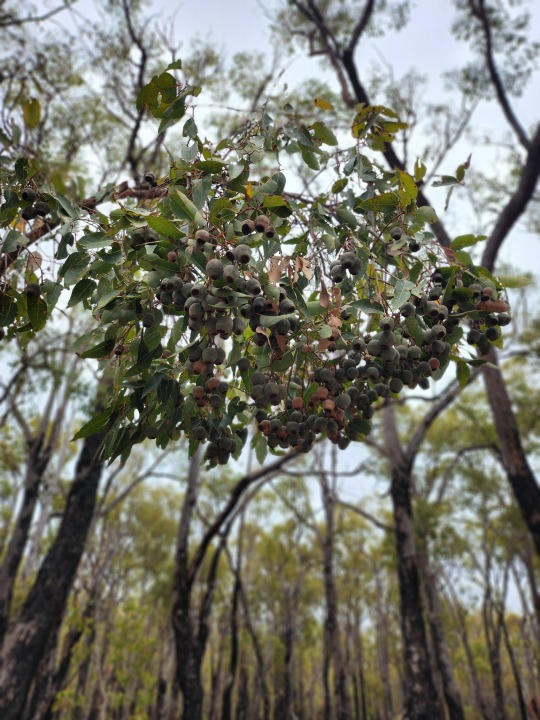
This sapling can barely hold the weight of its own creation...
Honkey nuts are a favoured food source of the endangered black cockatoo (both the white tail and red tail species), and chewed honkey nuts often litter the ground at the base of the marri tree.

(Bird photo credit)
🌏 Collie, south-west Western Australia
📸 @fire-ecology
#botany#plant science#fire ecology#plants#fire#ecology#op#australia#wildfire#bushfire#marri#eucalyptus
5 notes
·
View notes
Text
Balga (Xanthorrhoea preissii, aka grasstree) looking beautiful as they go up during the worst fire of the season. You can see how many embers are being thrown from just two little grasstrees.
Balga are highly adapted to fire and are usually the first plant to resprout after the fire - within a week or two.
This was the last fire I worked on, the Wooroloo fire, back in Jan 2021, Western Australia, before getting my fire science job! 🔥
📸 @fire-ecology
33 notes
·
View notes
Text
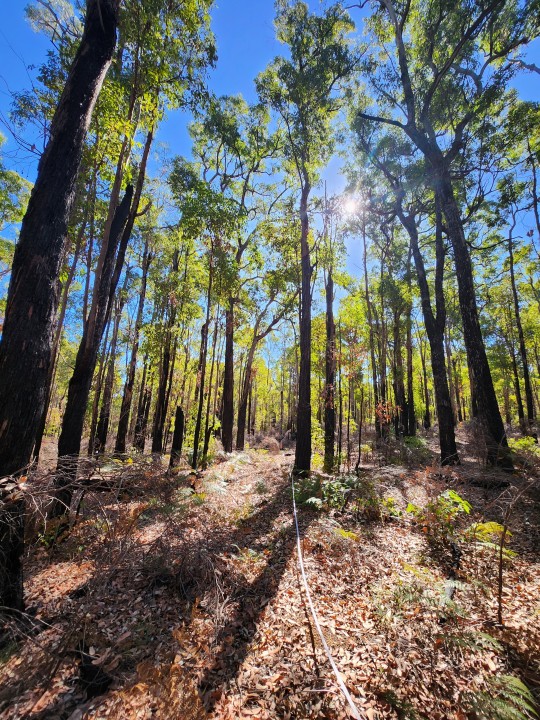
Blackened trunks of a burnt jarrah forest (Eucalyptus marginata), a very common sight in the region prone to frequent fire 🔥
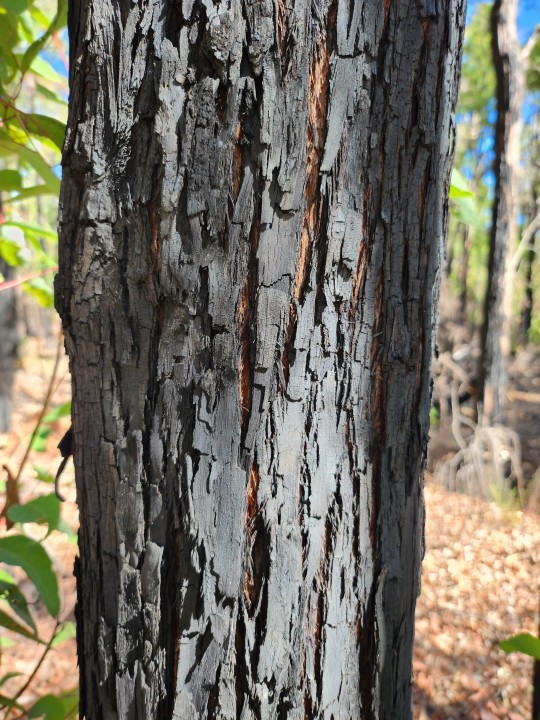
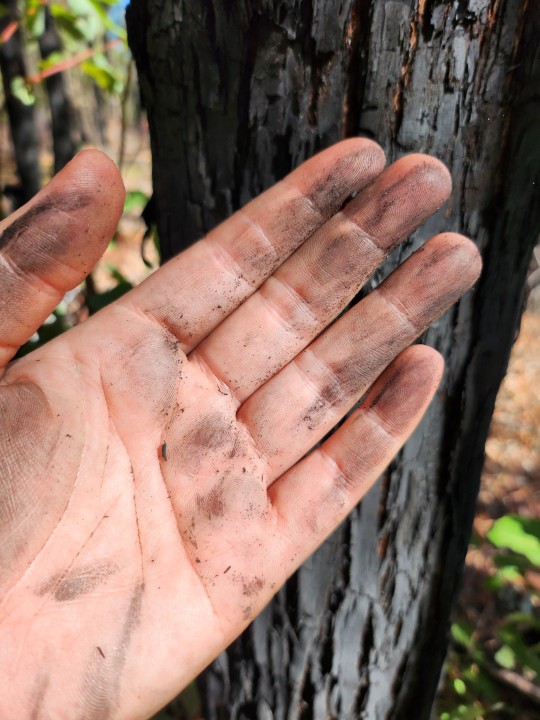
They survive fire with very thick fire-resistant bark, and regenerate by epicormic resprouting (from the trunk) and basal resprouting (from the base) to form new stems and branches.


L: Epicormic, R: Basal resprouting.
🌏 Collie, south-west Western Australia
📸 @fire-ecology
#personal#botany#ecology#australia#fire#fire ecology#plant science#nature#environment#western australia#plants#science#op
13 notes
·
View notes
Photo
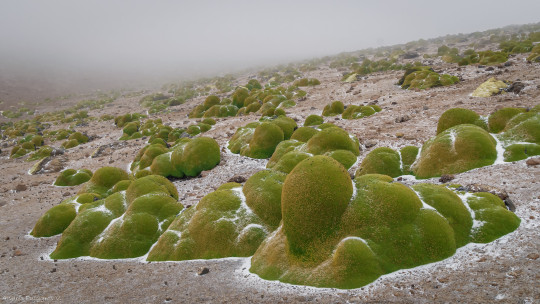


Yareta or llareta is a velvety, chartreuse cushion plant in the family Apiaceae which is native to South America. It grows in the Puna grasslands of the Andes in Peru, Bolivia, northern Chile and western Argentina at altitudes between 3,200 and 5,250 metres.
Photos by Andres Puiggros V.
3K notes
·
View notes
Text

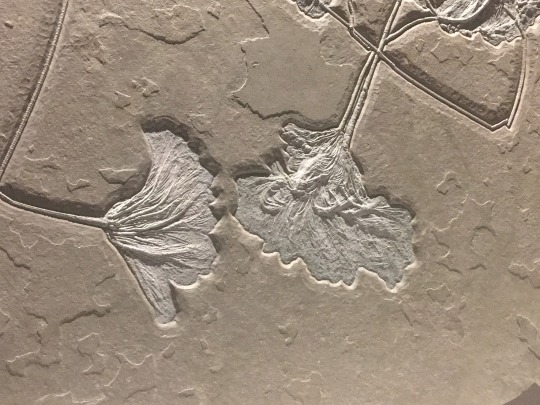

Fossilized Sea Lily and the Houston Museum of Natural Science.
4K notes
·
View notes
Text

Day in the life of a fire ecologist 🔥

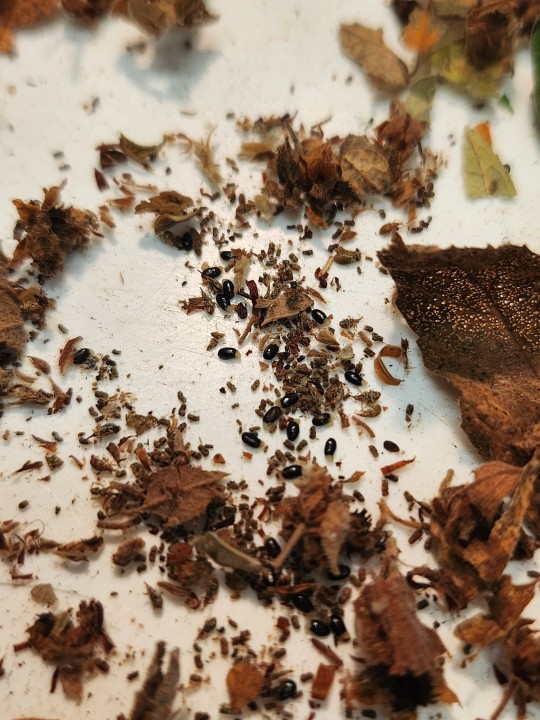
These are the seeds of Commersonia apella, a critically endangered species. Known to exist at only one site after previous populations dwindled, a massive bushfire ripped through the region burning ~100,000 ha of dense, tall open Eucalyptus forest. Suddenly over 20 populations sprung up, and it was thought the species requires more frequent fire than it had been receiving. So the regional flora officers asked the fire science team for help, and here we are, studying the species 🤓😁🌿
13 notes
·
View notes
Text
There was a surprising amount of anti-forest-fire propaganda during World War II:
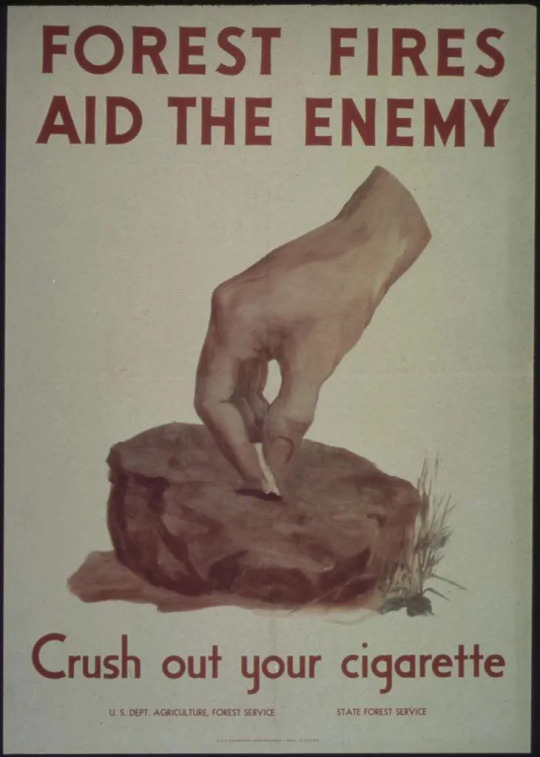

{Buy me a coffee} {WHF} {Medium} {Looking Through the Past}
Why was the American government so worried about forest fires? And what did this have to do with Bambi and Smokey the Bear? Click below to find out:
162 notes
·
View notes
Text

Workies 🔥
0 notes
Text
Bro, you ok? Bro, humans aren’t separate from the ecosystems around us. We’re a part of them, bro. Bro, we’re never going to have absolutely zero effect on ecosystems, because we live here, bro. Bro, I never said it had to be a bad effect. We don’t have to immediately be perfect either, bro, sometimes doing what you can is what you can, and its way better than nothing. Bro what do you mean humans are a plague. You’re starting to sound a bit like an ecofascist, bro… Bro?
49K notes
·
View notes
Text
Taking a moment to appreciate where I am working today 💚 ✨️
Karri forest, south-west Australia 🌿
📸 @fire-ecology
#forest#karri#australia#green#plants#plant science#botany#ecology#environment#nature#bush#earth#fire#fire ecology#op#birds
16 notes
·
View notes
Text
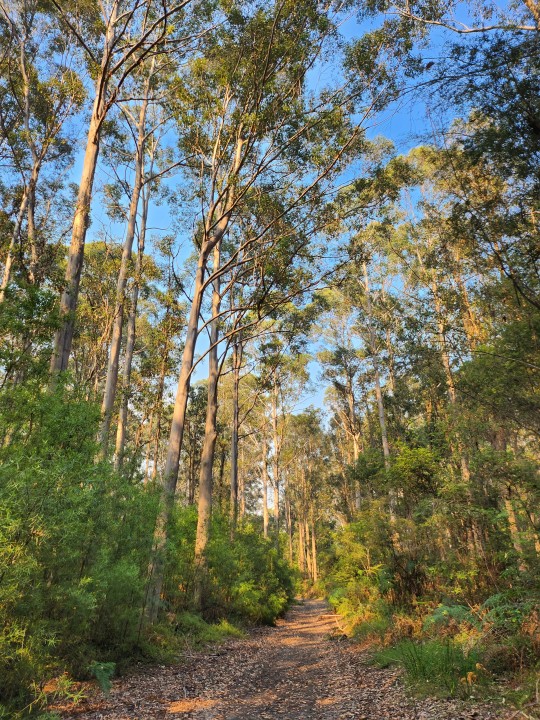
Karri country
🌏 Pemberton, south west Western Australia
📸 @fire-ecology
1 note
·
View note


